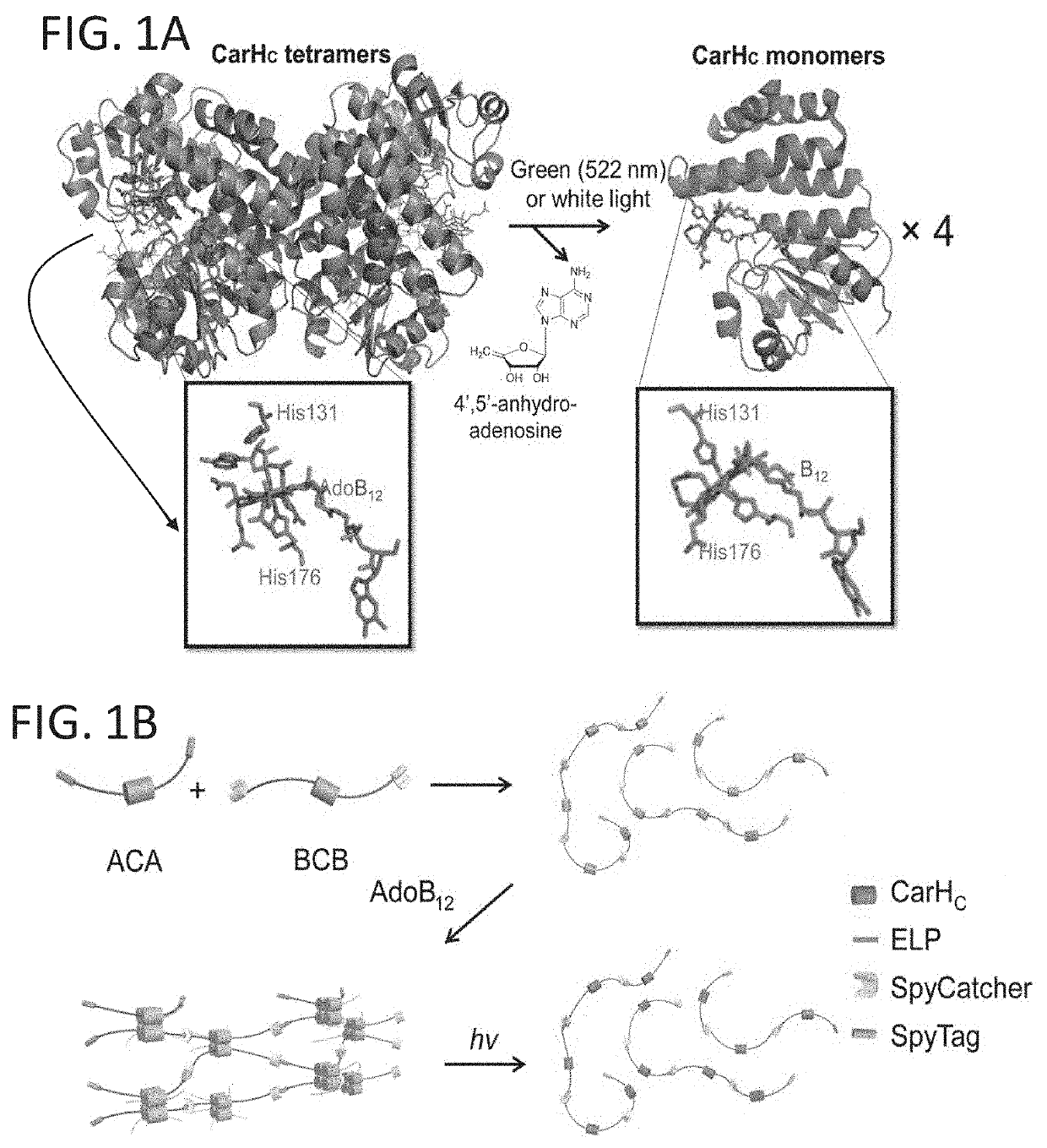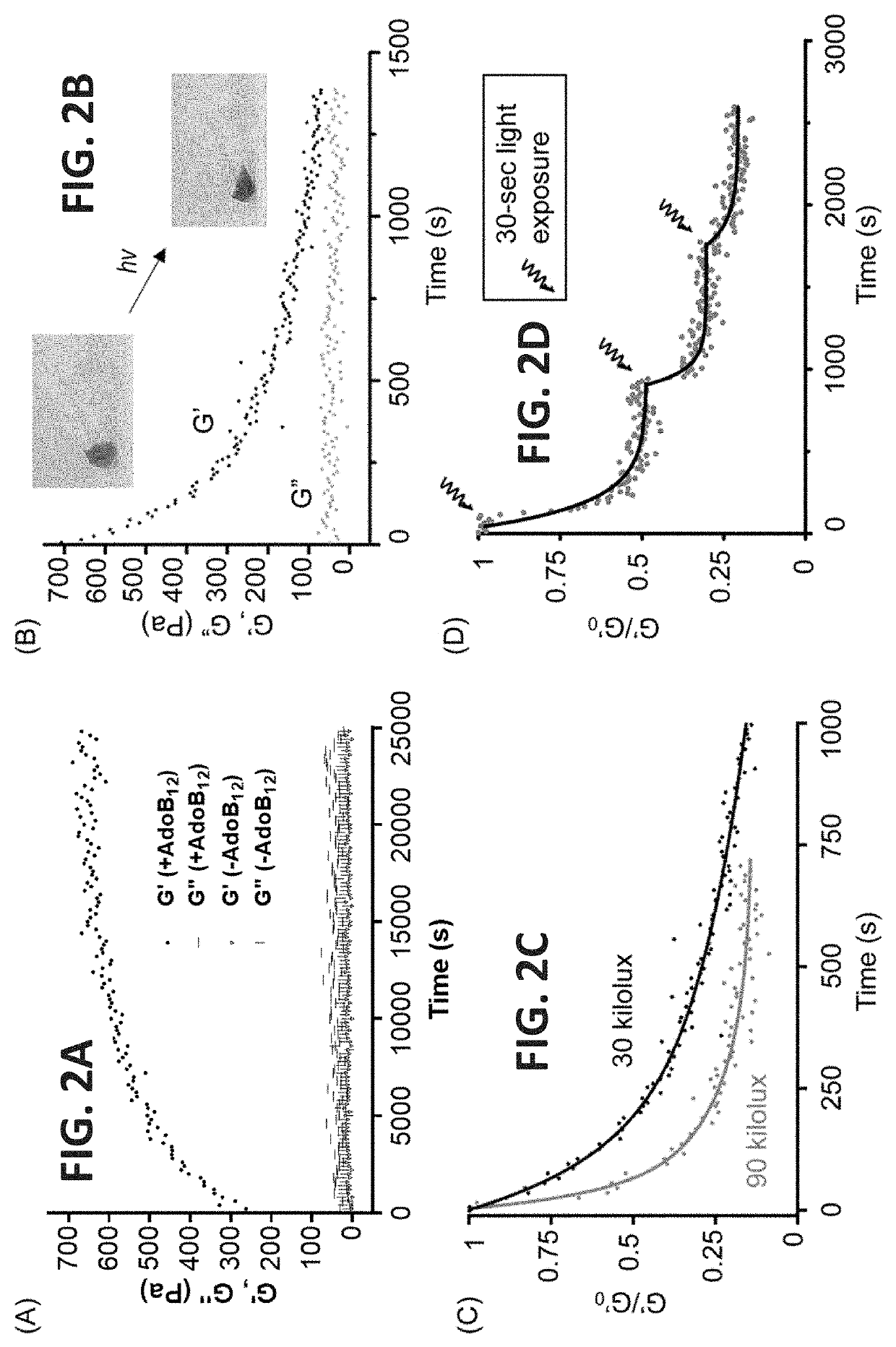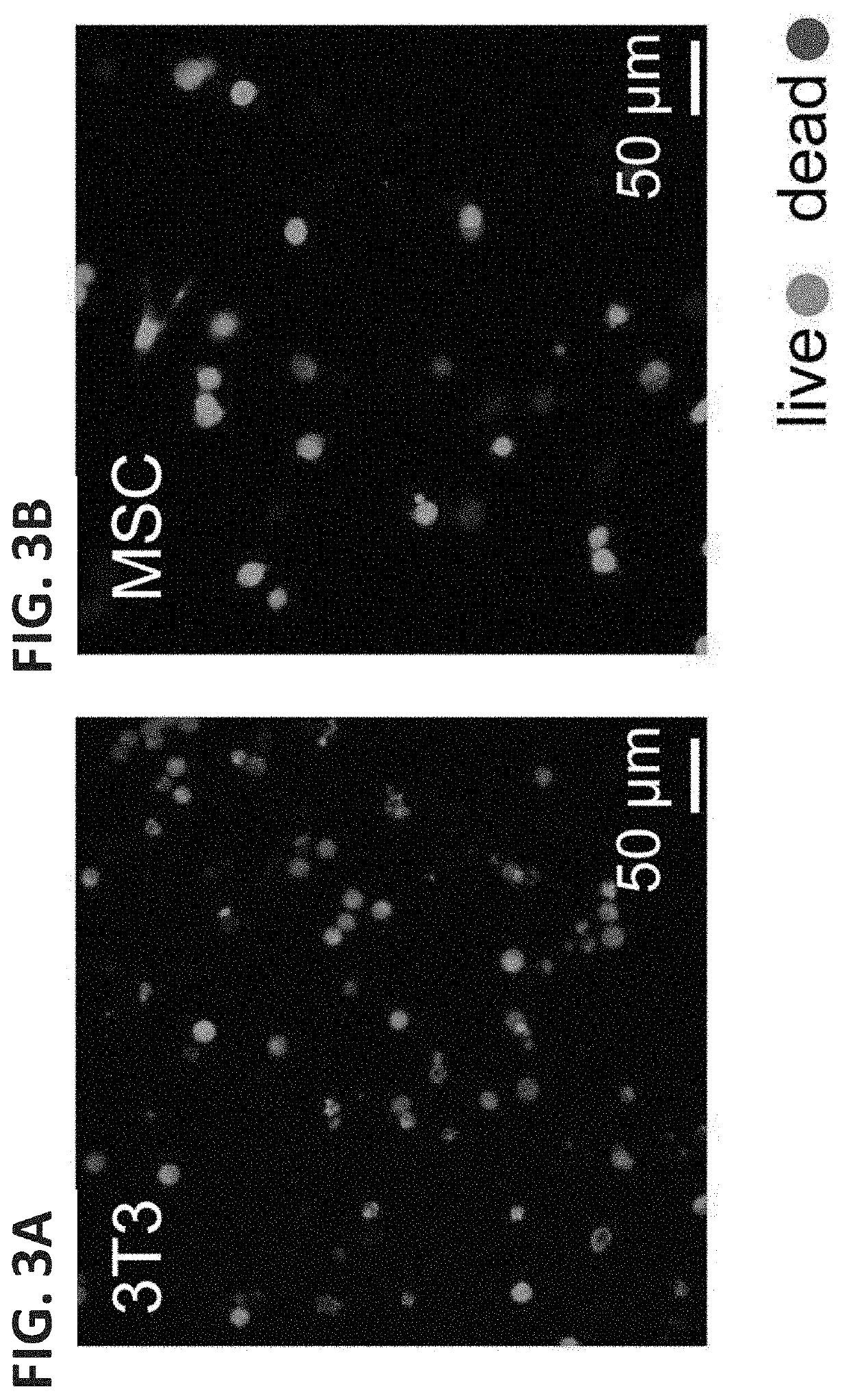Photoresponsive protein hydrogels and methods and uses thereof
a protein hydrogel and photoresponsive technology, applied in the field of new materials, can solve the problems of mechanical scraping damage to cells, inconvenient use in confined spaces, and materials that cannot fully recapture the dynamic signaling involved in biological processes,
- Summary
- Abstract
- Description
- Claims
- Application Information
AI Technical Summary
Benefits of technology
Problems solved by technology
Method used
Image
Examples
example 1
onstruct Design
[0262]To polymerize polypeptides comprising CarHC, two gene constructs were designed encoding the telechelic proteins SpyTag-elastin-CarHC-elastin-SpyTag (ACA; 41 kDa) and SpyCatcher-elastin-CarHC-SpyCatcher (BCB; 68 kDa), respectively (FIG. 1B). The ELP (elastin-like polypeptide, or extracellular matrix protein fragment) domain comprises repeating pentapeptides (VPGXG)15(SEQ ID NO: 20), where X represents either valine or glutamate at a ratio of 4:1, a composition that enhances the expression yield and solubility of these recombinant proteins under physiological conditions. The reaction of SpyTag and SpyCatcher was designed to covalendy stitch together CarHC to form protein biopolymers, of which interchain interactions will be dominated by the AdoB12-induced CarHc tetramerization (FIG. 1B).
Example 2: Synthesis of CarHC Hydrogels
[0263]Using an Escherichia coli expression system, sufficient amounts of the ACA (98 mg / L) and BCB (66 mg / L) proteins with high purity (FIG. ...
example 4
psulation and Light-Induced Release / Recovery
[0267]A 3D cell culture system that allows cells to be encapsulated and readily released / recovered without resorting to complicated chemical or proteolytic degradation is important for the study of cell matrix interactions and tissue engineering applications. The CarHC hydrogel comprising the linkage structures ACA+BCB+AdoB12 undergoes a rapid gel-sol transition on light exposure which allows for facile recovery and release of cells after 3D culturing. First, the cytocompatibility of the CarHc hydrogel using mouse 3T3 fibroblasts and human mesenchymal stem cells (hMSCs) was examined. To encapsulate the cells, the BCB solution containing the cells was mixed thoroughly with the ACA solution at a 1:1 molar ratio followed by adding a stoichiometric amount of AdoB12 to initiate gelation in the dark. After 2 h of curing, the gels were covered with culture medium and incubated under standard conditions (37° C. at 5% CO2) away from light. After 24...
example 5
uced Protein Release
[0270]Protein drugs, an important category of modem therapeutics, have a short half-life time inside the body because of rapid plasma clearance and proteolytic degradation, which constitutes a fundamental challenge for their delivery. The feasibility of using the photoresponsive CarHC-ELP hydrogel system to encapsulate and release protein molecules in a controlled manner was investigated. Two recombinant proteins, SpyTag-elastin-like polypeptide-SpyTag-elastin-like polypeptide-SpyTag (represented by the structural linkage “AAA”) (FIG. 6 and FIG. 13) and BCB, were synthesized with an elastin protein fragment to generate a covalently cross-linked ELP hydrogel. The two proteins were dissolved in PBS to make 10 wt % solutions. Gelation was initiated by mixing the two components at a 2:3 molar ratio and a stoichiometric amount of AdoB12 in the dark. Dynamic shear rheology experiments in time-, frequency- and strain-sweep modes and erosion tests further confirmed the f...
PUM
| Property | Measurement | Unit |
|---|---|---|
| Fraction | aaaaa | aaaaa |
| Fraction | aaaaa | aaaaa |
| Water content | aaaaa | aaaaa |
Abstract
Description
Claims
Application Information
 Login to View More
Login to View More - R&D
- Intellectual Property
- Life Sciences
- Materials
- Tech Scout
- Unparalleled Data Quality
- Higher Quality Content
- 60% Fewer Hallucinations
Browse by: Latest US Patents, China's latest patents, Technical Efficacy Thesaurus, Application Domain, Technology Topic, Popular Technical Reports.
© 2025 PatSnap. All rights reserved.Legal|Privacy policy|Modern Slavery Act Transparency Statement|Sitemap|About US| Contact US: help@patsnap.com



